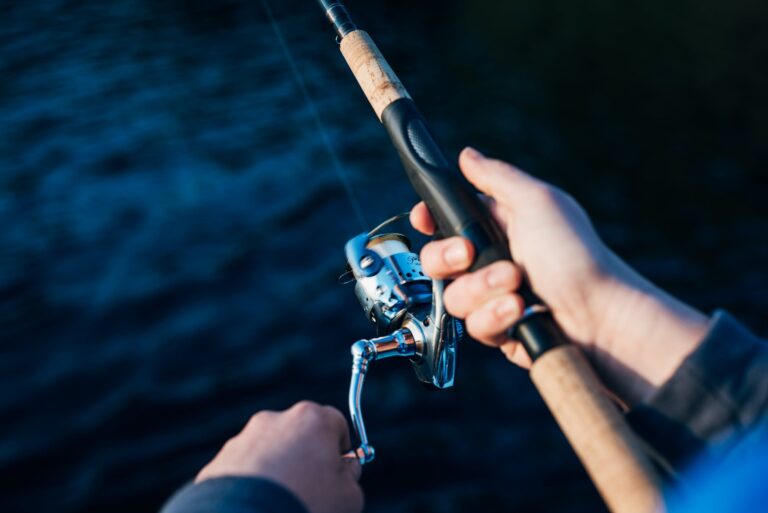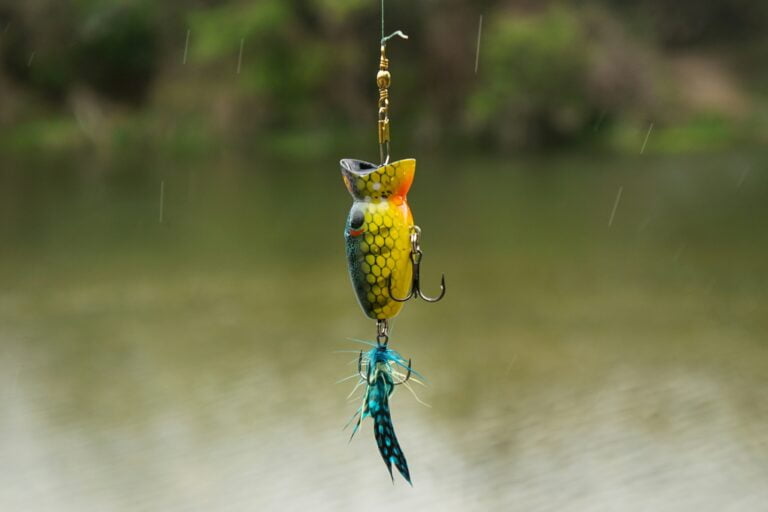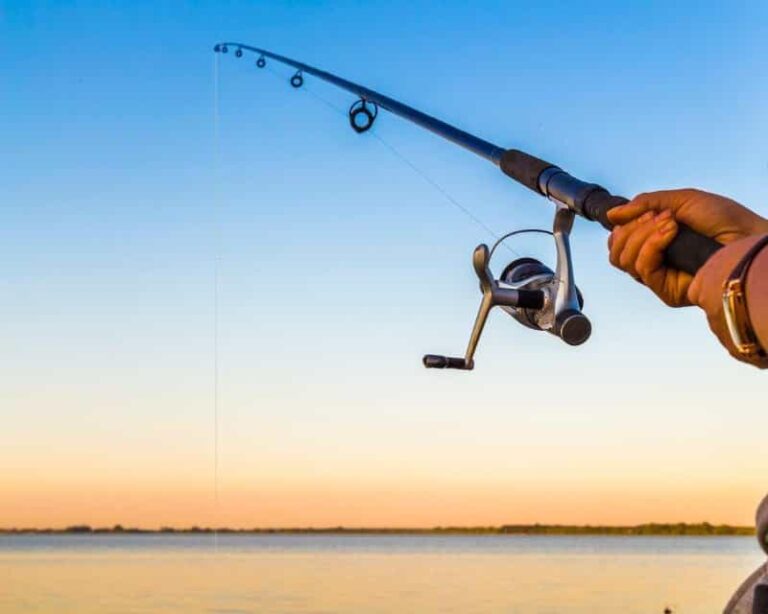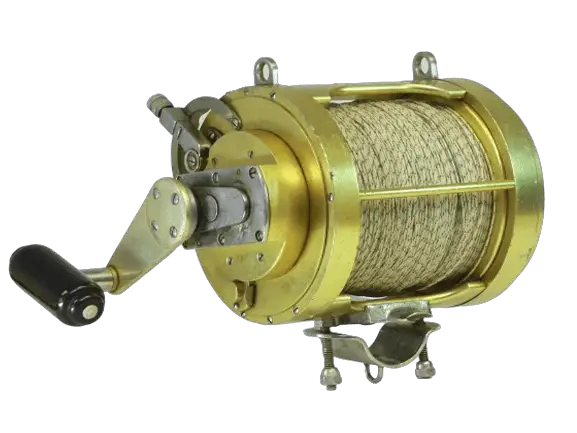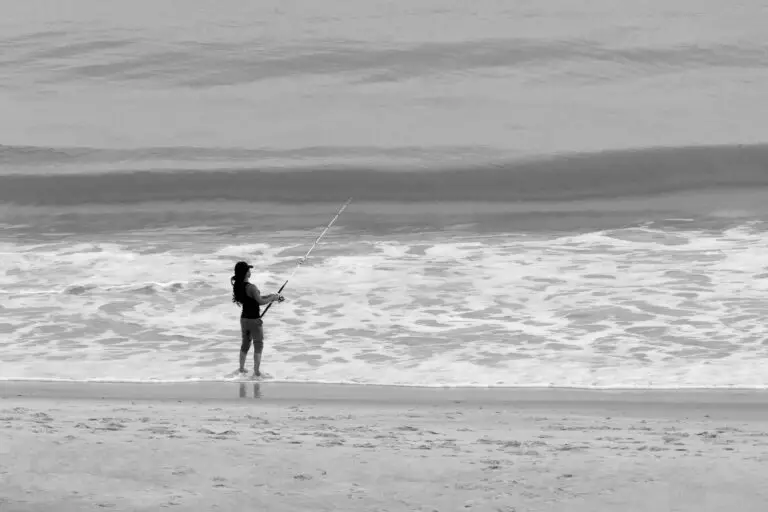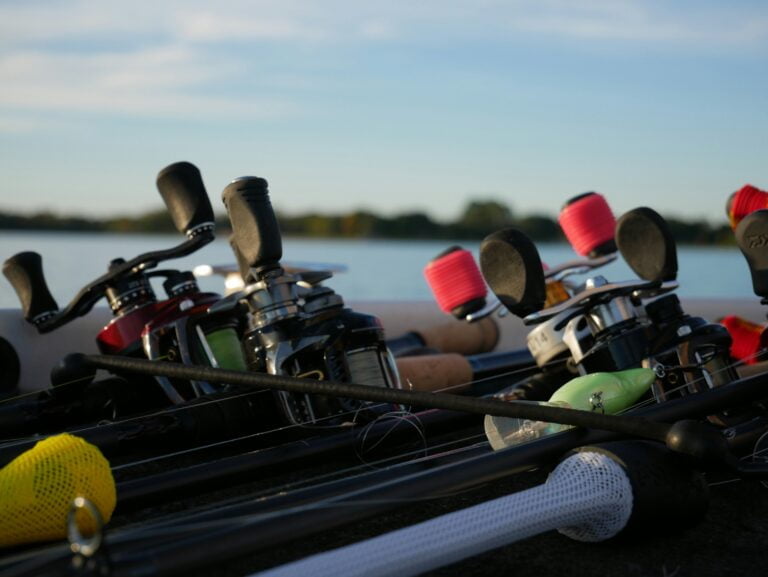How To Set Up A Surf Fishing Rod: A Step-By-Step Guide 2024
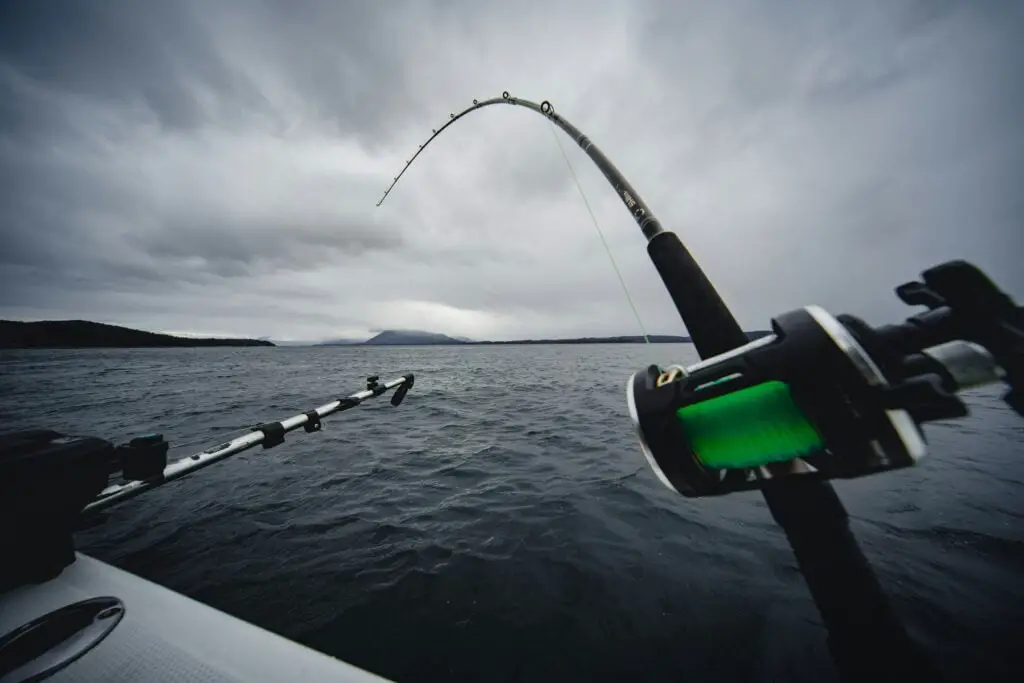
The salty spray kisses your face due to the fact that the sun dips low on the horizon, portraying the sky in fiery colors. Suddenly, your fishing rod bends dramatically, and the reel is screaming as an effective fish fights for its freedom. The thrill of surf fishing is unlike any other.
It’s a struggle in opposition to the factors, a check of your ability and endurance, all rewarded with the capacity for a shocking trap. But before you could experience this exhilarating combat, you want to be prepared.
Here’s your closing guide to putting in place your surf fishing rod, ensuring you are ready to triumph over the waves and hook the prize!
How To Set Up A Surf Fishing Rod: A Step-By-Step Guide 2024
Gear Up: Essential Surf Fishing Equipment
The pounding surf needs a robust setup that can handle lengthy casts, heavy weights, and the powerful struggles of fighting fish. The essential mechanisms you’ll need to ride out the waves are broken down here:
Surf Rod: Your rod is an extension of your arm, so choosing the right one is critical. Here’s what you should not forget:
Length:Surf rods generally range from 8′ to 14′ ft. Longer rods offer greater casting distance, while shorter ones offer extra manageability for near-quarters fishing.
Action:Action refers to how much the rod bends beneath strain. Fast-motion rods bend best at the tip, making them best for lengthy casts and feeling subtle bites. Moderate motion rods bend more for the duration of the blank, offering better manipulation throughout fights.
Power:Power suggests the rod’s energy. Medium-heavy or heavy energy Rods are ideal for surf fishing, as they can take care of heavy weights and scuffling with massive fish.
Material: Most surf rods are crafted from graphite for a lightweight and touchy experience. Some less expensive alternatives are made of fiberglass, which is heavier but more resilient.
Surf Reel:A dependable reel is critical for retrieving your line and battling massive fish. Consider those elements:
Size: A reel size of 4000 to 8000 is suitable for most surf fishing programs.
Gear Ratio: A better equipment ratio (5.2:1) retrieves line quicker, which is useful for quickly covering ground or fighting strong fish. A decreased equipment ratio (4.0:1) gives greater strength for winching in heavy catches.
Line Capacity: Choose a reel that might preserve enough line (normally 100–300 yards of braided line or 3–4 hundred yards of monofilament) to catch far-off fish.
Durability:Look for a reel with a corrosion-resistant frame and saltwater-grade additives to withstand the difficult ocean environment.
Main Fishing Line: You’ll need a robust and sturdy line to deal with the weight of your sinker and the combat of a fish. Here are the two principal choices:
Braided Line:Offers superior strength, sensitivity, and casting distance. However, it’s less forgiving on knots and may be trickier for novices to deal with.
Monofilament Line:More user-pleasant with accurate knot strength and visibility. However, it stretches more than braid, affecting casting distance and bite detection.
Test weight choice depends on the target species and surf situations. Lighter strains (15–20 lb) are suitable for smaller fish in calmer conditions, while heavier traces (30–50 lb) are wished for larger fish and hard surf.
Shock Leader: Think of this as your line’s bodyguard. A surprise chief, typically made from fluorocarbon or heavier monofilament, absorbs the shock of casting and prevents fish from breaking your predominant line. Choose a frontrunner length 2-4 times the period of your rod.
Swivels and sinkers: Swivels prevent line twists resulting from bait spinning. Barrel swivels are an excellent choice, while ball-bearing swivels provide smoother operation.
Sinkers come in numerous shapes (pyramid, financial institution) and weights. Heavier weights are needed for sturdy currents and deeper water. Choose a weight that allows you to forge effortlessly and maintains your bait in the strike zone.
Rigs and Hooks: There’s a whole world of surf fishing rigs designed to offer bait enticingly to specific fish. We’ll discover popular rigs like high-low and Carolina rigs later, based totally on your target species. Circle hooks are rather recommended for surf fishing, as their layout promotes higher hooksets and decreases fish accidents.
Step-by-Step Guide: Spooling Your Reel and Setting Up the Rig

Now that you’re armed with the proper equipment, it is time to prepare your rod and reel for conflict. Here’s a step-by-step manual:
1. Attaching the reel to the rod
Most surf reels are secured to the rod seat with a foot that slides into the reel seat and a reel seat clamp that screws down to tighten. Ensure the reel foot is nicely seated and tighten the clamp firmly, but no longer so much that it crushes the reel foot.
2. Spooling the reel with the main line
Spooling your reel can be a bit fiddly; however, a line spool winder (optional) can make the procedure smoother. Here’s the guide’s approach:
Open the reel bail and loosen the drag.
Thread the line through the publications at the rod, beginning from the end and running your way right down to the reel.
Tie the end of the line to the empty spool with a steady knot (arbor knot).
Close the bail and maintain the road taut with light strain as you begin winding the deal.
Fill the spool to about 1/8″ inch beneath the rim to avoid line spillage in the course of casting.
As you wind, keep a little tension on the line to prevent loose coils that could tangle later.
3. Attaching the Shock Leader
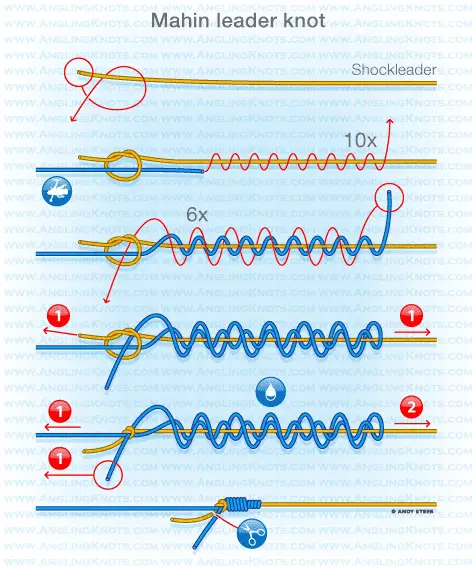
A strong connection between your main line and the shock leader is vital. Here’s the way to create one using the Albright Knot:
Cut a piece of shock core material (fluorocarbon or heavier mono) twice the length of your rod.
Tie a loop in the long run of the primary line with the use of an easy overhand knot.
Pass the loop of the primary line through the attention of the shock leader, but not through the overhand knot itself.
With each strain held taut, shape five to seven turns around the principle line above the loop, then bypass the tag cease of the surprise chief returned through those turns.
Moisten the knot and carefully pull on both the primary line and shock leader tag stop to tighten the knot firmly. Trim any excess tag ends.
4. Adding a Swivel and Sinker
Swivels save you line twists and are smooth to connect. Simply tie the leader to a swivel with the use of a robust knot, just like the progressed clinch knot. Then, attach your preferred sinker to the swivel using a loop knot or a snap swivel (non-compulsory).
5. Choosing and Attaching Your Rig
The sort of rig you select depends on the fish you’re targeting. Pre-tied rigs are available with no trouble; however, you may also tie your personal rig later. Here, we’re going to focus on attaching the rig to your leader:
Tie the chief to the swivel at the top of your pre-tied rig or the loop on the give-up of your pre-tied rig using another stepped-forward clinch knot.
6. Adding Bait:
The type of bait you use will depend on the target species. Popular alternatives encompass fresh or frozen fish strips, squid, clams, or crabs. Thread the bait onto the hook securely, ensuring it stays attractive to fish.
Pro Tips for Surf Fishing Success
Conquering the surf goes beyond just putting in your rod. Here are some insider recommendations to maximize your chances of landing a trophy catch:
Scout Your Spot: Beach conditions and goal fish go hand-in-hand. Look for areas with structures like jetties, cuts, or sandbars that attract baitfish and large predators. Calm bays or seashores with mild currents are ideal for novices.
Master the Cast: The forceful waves demand a unique casting approach. The sidearm forged minimizes stress again and maintains your line clear of the breaking waves. Hold the reel close to your frame and swing the weight again with a sideways movement, after which release the road with a snap as you propel the burden ahead.
Fight Like a Pro: When a fish strikes, face up to the urge to yank! Let the rod take on the initial stress as the fish runs. Then, slowly but firmly, reel the fish in, using the rod’s electricity for your benefit. Tire the fish out before trying to land it.
Post-Fishing Care: Respect the sea by properly cleaning and retaining your gear. Rinse your rod and reel with freshwater to get rid of any salt residue. Let everything dry completely before storing your device to prevent rust and corrosion.
By following those hints and practicing your competencies, you’ll be well on your way to experiencing the thrill of surf fishing. Remember, endurance, patience, and a hint of appreciation for the strength of the sea are key components for a successful surf fishing journey.
Bonus Tip: Safety first! I am always privy to rip currents and in no way fish on my own, especially at unexpected locations. Check local regulations regarding fishing licenses and bait restrictions.
Conclusion How To Set Up A Surf Fishing Rod
The rhythmic crash of waves, the tug of a powerful fish, and the satisfaction of a hit trap—surf fishing offers an extraordinary outdoor revel. But before you overcome the surf, it is vital to have your rod and reel installed for conflict. Remember those key steps:
Choose the right surf rod based on period, action, power, and fabric.
Select a dependable surf reel, thinking about size, tool ratio, line ability, and durability.
Decide between a braided or monofilament line primarily based on your choices and target species.
Attach a surprise chief to soak up casting and combat strain.
Utilize swivels to prevent line twists and choose the correct sinker weight for surf conditions.
Select a pre-tied rig or learn how to tie your personal based totally on the fish you’re focused on.
With a well-set-up rod and the know-how gleaned from those seasoned guidelines, you’re well on your way to experiencing the magic of surf fishing.
So, seize your equipment, head to the seaside, and solidify your line for the adventure! The ocean awaits, and there would possibly simply be a trophy trap ready to be hooked.
Safety First
Prioritize safety above all else when going on an adventure to go surf fishing. Here are some crucial safety measures to bear in mind:
Be aware of rip currents. Rip currents are effective channels of water that glide far from the shore. If stuck in a ripper, stay calm and do not combat it. Swim parallel to the shore till you get away from contemporary-day’s pull, then swim closer to shore from a perspective. If you can’t swim to protection, yell for help.
I never fish by myself. Especially in unusual places, having a pal with you gives you an additional layer of safety and assistance in case of emergencies.
Check neighborhood regulations: fishing licenses and bait guidelines can vary by area. Familiarize yourself with the neighborhood tips before casting your line.
Mind the weather: Be aware of climate conditions and forecasts. Avoid fishing at some stage in thunderstorms or durations of excessive winds and hard surf.
Dress accurately: Wear clothing and shoes that might be suitable for the climate situation. Waders or waterproof boots are advocated for surf fishing.
Respect the ocean: The ocean is an effective and unpredictable force. Be aware of your surroundings, and don’t wade in deeper than you can effortlessly cope with.
By following these safety recommendations and placing your gear well in place, you may ensure a fun and successful surf fishing experience!

